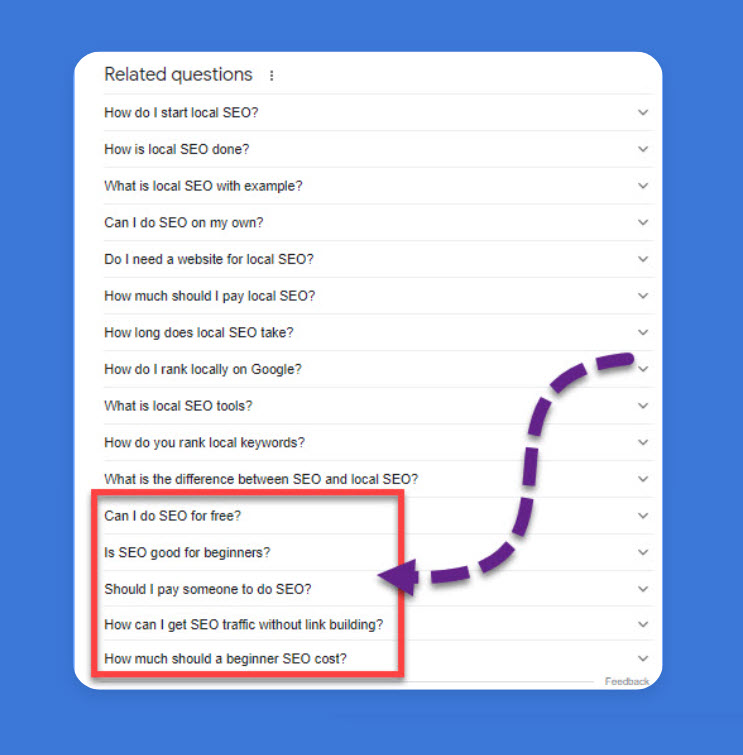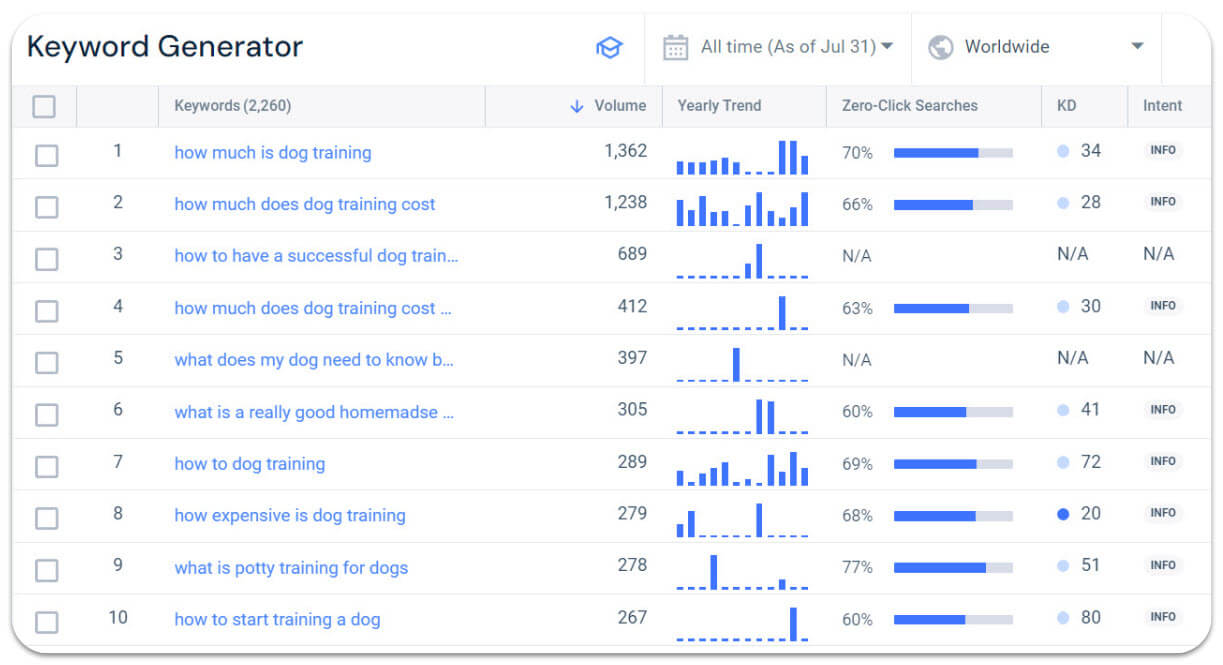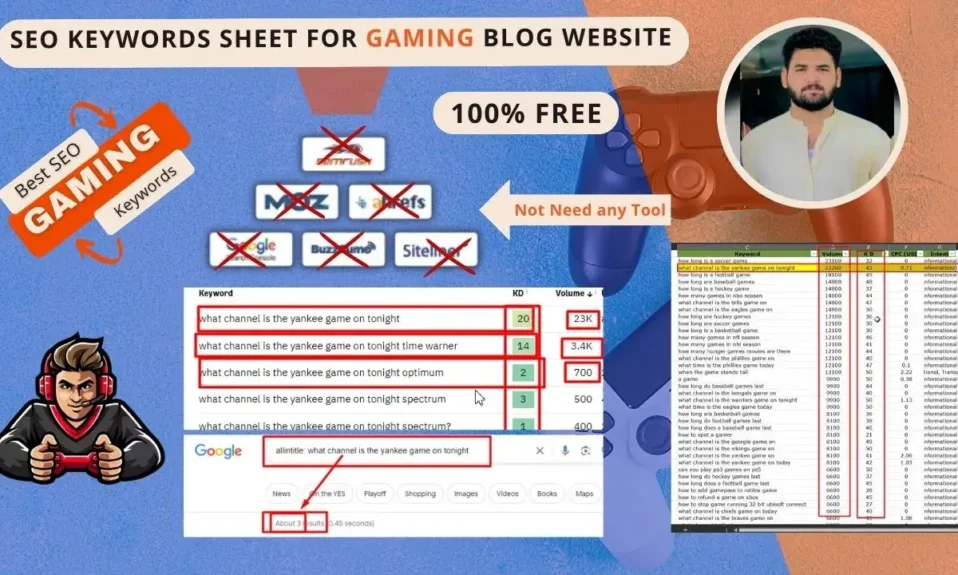
We’ve all seen it.
Google has been slowly evolving right into a semantic search engine.
Meaning Google makes an attempt to know the that means of language and ideas.
What’s extra, Google is doubling down on semantics with its algorithm updates.
As an example:
- Hummingbird
- Rank Mind
- Bert
- Mum
And which means…
A semantic search engine requires a semantic search engine optimisation technique.
On this submit, I’ll reply:
What’s semantic search engine optimisation?
How do I implement a semantic search engine optimisation technique?
Now earlier than I bounce in, I simply need to observe that this weblog submit is meant to be a big-picture overview and is certainly not the ultimate phrase on the subject.
For those who want extra context for something, I’m linking to different assets.
What Is Semantic search engine optimisation?
Semantic search engine optimisation, or entity search engine optimisation is a SEO technique that focuses on the that means and context of phrases, phrases, and entities on a web site, reasonably than simply on particular key phrases.
Now, to know this let’s perceive what a semantic search engine is.
Semantic search engines like google use pure language processing (NLP) and machine studying algorithms to know two issues:
- The consumer’s search question
- The content material in its index
As a result of, if Google understands the consumer’s question, the search engine can perceive the search intent.
However, that’s only one a part of the image.
If Google understands the content material in its index, it could precisely reply the search intent by presenting essentially the most related content material within the search outcomes.
This implies, while you deal with semantic search engine optimisation, you’re serving to the search engine discover essentially the most authoritative content material in order that it could serve its customers.
It is a win-win.
You get extra site visitors and the search engine has comfortable customers.
Semantic search engine optimisation Advantages
Now that you simply perceive what semantic search engines like google are designed to do, let’s now bounce into some semantic search engine optimisation advantages.
1. Improved Search Engine Rankings:
As you’ll see later within the submit once I get into the entity search engine optimisation technique, your aim is to cowl complete subjects and construction them in a approach that’s simple for search engines like google and customers to navigate.
This helps the search engine:
- Perceive what your website is about
- Discover focused solutions to consumer questions
If you get this proper, your content material is prone to rank increased.
2. Current your website as a subject professional to each search engines like google and customers:
If you cowl a whole matter totally, your customers will understand you as an professional in your area of interest. For those who deal with making that content material accessible by way of a logical construction and well-placed inner hyperlinks, your customers usually tend to go to your website usually.
What’s extra, Google will view your website as a topical authority awarding your website with extra site visitors.
3. Higher Consumer Expertise:
Structuring your content material for semantic search will assist your customers in two methods. Greater rankings will save customers effort and time by bringing them the precise content material they had been in search of.
As soon as customers go to your website they may discover a community of content material that’s simple to navigate. And having a well-structured useful resource is prone to end in customers visiting your website extra usually.
The extra useful you’re to your customers, the extra doubtless they may look to your online business sooner or later.
4. Elevated CTR and Engagement
Semantic search engine optimisation methods will assist your website rank for longtail key phrases. Now, though longtail key phrases have decrease search volumes, they give you two large benefits.
The low search volumes usually imply low competitors as SEOs are likely to deal with increased search volumes. And, low competitors may end up in some fast wins that add up over time.
Secondly, longtail key phrases have a tendency to incorporate extra phrases and modifiers which are likely to have a transparent and apparent search intent. The higher you perceive the search intent, the simpler it’s to create content material particularly tailor-made to your customers.
5. Elevated Conversion Charges
When your content material is optimized for semantic search, you possibly can entice extra certified leads and enhance the possibilities of changing these leads into clients.
By offering related and informative content material that meets their wants, you possibly can construct belief and set up your self as an authority in your {industry}.
6. Future Proof Your Web site
Semantic search engine optimisation is changing into extra vital with each passing yr.
It’s evident that every algorithm provides a layer of semantic understanding to the search engine. It’s attending to the purpose the place we will’t ignore semantic search engine optimisation techniques.
This implies the earlier you take note of semantic search engine optimisation the higher your possibilities of search engine optimisation success sooner or later.
Now that you simply perceive the advantages of semantic search engine optimisation, let’s get into the technique.
That is meant to provide you a big-picture understanding of what to do. If something within the subsequent part is unclear, I embody hyperlinks to different assets that provides you with the context you want.
Semantic search engine optimisation Technique – Reaching Topical Authority
Understanding the semantic search engine optimisation technique requires a paradigm shift. Till now, search engine optimisation was at all times about optimizing content material to rank for key phrases.
The recommendation was at all times one key phrase per asset.
Semantic search engine optimisation is a topical search engine optimisation technique that requires that you simply cease specializing in key phrases and begin seeking to rank complete subjects.
If you try this successfully you obtain topical authority.
To know this additional, there’s a Google patent that tells us that Google profiles your website in accordance with the subjects it covers.
What’s extra, Google understands subjects broadly and calls every matter a Data Area.
Every Data Area features a listing of queries in addition to an inventory of websites that cowl that matter.
This implies in case you cowl a subject persistently, Google would possibly classify your website as a part of the Data Area assigned to that matter.
When a consumer sorts a question into Google, Google identifies which Data Area the question comes from.
In case your website is included in the identical Data Area because the question, Google would possibly match your website with that question and would possibly rank your content material within the search outcomes.
Now, simply profiling your website in accordance with subjects is step one.
It’s worthwhile to set up your website as the most important authority in your chosen subjects. You try this by making a community of authoritative content material that covers all the matter totally answering all consumer questions within the course of.
As soon as you’re an authority in your chosen matter, it is best to goal to have extra topical protection than your opponents.
What’s extra, in case you cowl multiple matter, it is best to separate your completely different subjects into silos.
However, simply publishing a considerable amount of topical content material isn’t sufficient. You additionally have to construction your content material in a approach that search engines like google perceive data.
Now to know this, let’s get into Google’s Data Graph.
Google’s Data Graph features a community of entities structured in an analogous option to how the human mind buildings data. Having data structured this fashion permits Google’s NLP algorithms to research language and even reply questions.
For semantic search engines like google to know your content material, it is best to construction it the identical approach.
This implies utilizing a subject/subtopic hierarchy.
When you’ve figured this hierarchy out, construct it into your website structure. However extra on that later.
To determine what content material to create, first analysis your chosen matter.
Topical Authority Analysis
It’s best to now perceive the big-picture topical authority technique.
The query now’s, how have you learnt what content material to create? How a lot content material do you want and what particular questions ought to your content material reply?
Begin by researching how Google understands your matter as a complete. You are able to do this by trying on the Google SERPs.
It’s worthwhile to reply:
- What are the subtopics Google associates along with your matter?
- What questions does Google affiliate along with your matter?
- What entities are associated to your matter?
Let’s begin with subjects and subtopics.
Subjects and Subtopics
Let’s first determine learn how to perceive how Google understands the subject.
Google’s Data Graph contains each entity data and the way these entities relate to one another in a logical hierarchy.
Though Google doesn’t inform you the way it buildings entities in its Data Graph or what is said to what, you’ll find some apparent clues.
There are a lot of locations to look:
- Data Panels
- Picture Search
- Auto-Recommend
- Google Traits
- search engine optimisation instruments
One of the simplest ways to determine this hierarchy is to take a look at Data Panels. The reason being the knowledge offered in them comes instantly from Google’s Data Graph.
To discover a Data Panel about your entity, do a generic search about your matter.
Within the screenshot beneath, I looked for the entity Gandhi.
As you possibly can see Google contains filters subsequent to the title. Every one is a subtopic you possibly can create content material round.




For those who can’t discover subtopics and don’t know learn how to construction your content material, check out the highest websites that cowl your matter.
Competitor Analysis: Topical Evaluation
So, if I used to be within the pets area of interest I’d merely Google the subject and see what comes up. Click on on any of the highest outcomes and take a look at how they construction their data.
Listed below are some issues to take a look at:
- URL construction
- Menus
- Breadcrumbs
For instance, in case you take a look at thesprucepets.com, you’ll discover that they’ve siloed their data by pet sort.
You possibly can see that of their top-level menu.



They’ve details about:
- Canines
- Cats
- Birds
- Small pets
- Aquariums
- Reptiles (!)
- Horses
- Finest pet merchandise
In different phrases, in case you had a pet iguana lizard and also you needed to show it to fetch, you’d take a look at the Reptiles content material. 😊
Every one in every of these things is a subject.
If you wish to see how they organize their subtopics, check out the subheadings on their menu.




If there aren’t any subheadings, check out their breadcrumbs.




As you possibly can see within the screenshot above, the subject is Cats. Cat well being & wellness is a subtopic of cats. Cat illnesses & issues is a subtopic of Cat well being & wellness.
You will discover a wealth of knowledge on competitor websites in case you dig round.
At this stage, it is best to have an inventory of subjects and subtopics.
Subjects and subtopics allow you to perceive learn how to break the knowledge up in your website. In different phrases, they allow you to with content material construction.
Now the query is, what data ought to exist in every matter or subtopic?
To determine that out let’s discover some questions that your viewers is asking.
Discovering questions associated to your matter and subtopics
The purpose of this part is to discover a listing of questions that your audience desires solutions for.
By answering any and all of those questions, search engines like google will finally see you as an authority on the subject.
Google has a big database of consumer questions.
What’s extra, this database is bucketed into subjects (or Data Domains). This implies when a consumer asks a query, Google will categorize that query in accordance with the subject. It then matches the question with its matter.
This implies, if you wish to cowl your matter totally, it is best to goal to reply as many of those questions as you possibly can.
To do that, merely Google your matter and try the Folks Additionally Ask field.
Click on the outcomes. The extra you click on, the extra outcomes Google will convey.
For those who hold clicking, finally you’ll discover that Google brings you outcomes that aren’t related to your question.
As an example, within the screenshot beneath, I looked for the key phrase ‘learn how to do native search engine optimisation’.



Now you’ll discover sooner or later, Google brings queries that aren’t totally associated to native search engine optimisation.
- Can I do search engine optimisation at no cost?
- Is search engine optimisation good for inexperienced persons?
- Ought to I pay somebody to do search engine optimisation?
- And so on.
Sure, common search engine optimisation is said to native search engine optimisation, however it’s clearly a distinct search intent.
Now by making use of a little bit of widespread sense (your greatest search engine optimisation software), I do know that native search engine optimisation is a subtopic of search engine optimisation.
This implies all of the questions associated to common search engine optimisation ought to exist in a distinct silo to your native search engine optimisation content material.
Utilizing this technique, you possibly can compile an entire listing of queries for any matter or subtopic.
One other good spot to search for questions associated to your matter is key phrase analysis instruments.
Key phrase Analysis Instruments
As an example, in case you had been in search of questions on canine coaching, log into your key phrase analysis software and take a look at the Questions filter.
To do that successfully, seek for a broad key phrase and filter your outcomes down.
What I imply by broad is, seek for a head time period like ‘canine coaching’. Don’t go for a extra focused time period like ‘learn how to prepare your canine’.
The explanation it is best to seek for the top time period is you’re in search of all of the questions within the matter as a complete. For those who get too many outcomes, you possibly can at all times filters to handle the knowledge.
As an example, I looked for the (broad) key phrase ‘canine coaching’ within the Similarweb Key phrase Generator.
To see any questions that your viewers is asking, click on on the questions filter.




As soon as you’re there, you’ll discover a lengthy listing of query key phrases. What’s extra, you can even see Search Volumes, Key phrase Problem scores, and extra.
You’ve discovered all of the questions you might want to reply in every matter and subtopic. Nice. The next move is to know what entities Google associates along with your matter.
Associated Entities
Understanding the entities that relate to your foremost entity will assist you determine what to incorporate in each bit of content material.
associated entities may additionally allow you to discover extra concepts for content material it is best to cowl in your website.
So let’s return to Gandhi.
You possibly can simply discover entities associated to Gandhi’s entity by trying on the About part.



As you possibly can see within the screenshot above, the Data Panel hyperlinks the consumer to associated entities similar to:
- Kids
- Partner
- Grandchildren
- Dad and mom
It additionally hyperlinks you to entities associated to his assassination.
These are all entities linked to the primary entity in Google’s Data Graph and Google expects to see them within the content material.
Additionally, the vast majority of the entities are about Gandhi’s household. It would make sense to create a subtopic about Gandhi’s household.
One other option to discover associated entities is to take a look at the Similarweb Associated Key phrases report.




As you possibly can see within the screenshot above, I looked for the time period ‘canine coaching’.
Now, in case you take a look at the outcomes, you’ll discover that the report doesn’t simply convey an inventory of key phrases that embody the phrases canine coaching. As an alternative, it presents an inventory of phrases which are associated to the that means of the goal search time period.
As you possibly can see from the screenshot, the software contains:
- Pet coaching at residence
- Coaching pet
- Most profitable pet obedience coaching strategies
In different phrases, the entity pet is said to the entity canine in Google’s Data Graph.
For the reason that entity ‘pet’ is said to the entity ‘canine’ within the Data Graph, it is smart to incorporate them someplace in your content material.
Now you’ve gotten a physique of analysis, it’s time to tie all of it collectively in a topical map.
The 2 entities have related attributes as they’re each Finnish composers.
Since all of those entities are associated to Jean Sibelius within the Data Graph, it is smart to incorporate them someplace in your content material.
Now you’ve gotten a physique of analysis, it’s time to tie all of it collectively in a topical map.
Create a Topical Map
By now, it is best to perceive the distinction between rating key phrases and whole subjects. You must also have a great listing of:
- Subjects and subtopics
- Queries associated to every matter and subtopic
- Associated entities
To be able to personal complete subjects, you might want to plan your content material out. To do that, begin by producing a topical map.
A topical map is just a content material map that not solely features a listing of content material you propose to create but additionally the way it must be structured.
Now, since I’m a visible individual, I prefer to thoughts map this. You possibly can just about do the identical factor utilizing spreadsheets.
Map out your subjects and subtopics. When you’ve accomplished that, map out the precise content material that you simply intend to create for every matter or subtopic.
Take a look at all the associated entities and queries for every subtopic.
Every associated entity and associated question represents a bit of content material that ought to exist underneath every subheading.
Here’s a topical map that I created for my favourite Finnish composer, Jean Sibelius.




I discovered the subtopics Private Life and Compositions by trying on the Jean Sibelius Data Panel. I additionally discovered that Google’s Data Panel breaks the Compositions down additional into Symphonies and Tone Poems.
This evaluation helped me to create a transparent content material construction for the entity Jean Sibelius.
When it comes to the precise content material belongings I plan to create, I discovered an inventory of questions and associated entities.
If you wish to know precisely how I created that topical map, check out my weblog submit on learn how to create a topical map.
Okay, you’ve mapped out your content material, now it’s time to plan out your website structure.
Create Your Web site Structure
Okay, you’ve gotten your subjects, subtopics, and content material all mapped out. The following step is to construct your content material hierarchy into your website structure.
The circulation of knowledge in your website ought to make sense to each:
- Engines like google
- Your customers
Getting this proper is a win-win.
As a result of Google reads your website structure to know extra about your website and the subjects you cowl.
This implies it is best to current your hierarchy to Google by way of your:
- Menu headers
- URL construction
- Breadcrumbs
- Inner hyperlinks
It’s vital to notice that you simply don’t want all the above choices. Google has some ways to determine the circulation of knowledge in your website.
As an example, creating separate folders in your URLs won’t make sense to your website. Particularly you probably have a website that’s been round for some time as altering your URL construction would end in migrating content material, which is dangerous.
However, you probably have a large e-commerce website, separating your quite a few merchandise by way of folders in your URLs would possibly make sense.
The important thing right here is to have every content material silo exist in its personal area in your website in order that your customers can simply discover what they’re in search of.
Now, for an incredible instance of how to do that successfully, check out thesprucepets.com (talked about above).
They’ve a well-structured website structure that’s useful to the consumer, together with:
- Topically siloed content material of their top-level menus
- Dropdown second-level menus revealing subtopics
- Breadcrumbs
All of this makes discovering the suitable content material a breeze.



And, if individuals can perceive the circulation of content material in your website, Google can too. What’s extra, by holding your subjects separate from each other and making a logical hierarchy for them, you’re speaking your topical experience to Google.
Okay, so that you’ve mapped out your content material primarily based on SERP evaluation.
It’s now time to take a look at content material clustering by way of key phrase clusters.
Create Key phrase Clusters Utilizing Key phrase Analysis Instruments
One other option to analysis subjects is to work with key phrase clusters. It is a related strategy to understanding how customers and search engines like google break down subjects.
Key phrase clustering may help you determine content material hierarchies in addition to allow you to goal a set of key phrases for every of your content material belongings.
To do that, seek for broad key phrases in your area of interest and take a look at the outcomes.
If you do that it’s doubtless you’ll discover apparent patterns within the key phrases which is able to allow you to discover subtopics and key phrases that your customers are looking for.
To do that successfully, search for clusters of key phrases which have an analogous search intent. By doing this you possibly can establish which key phrases to focus on for every asset.
You are able to do this rapidly by utilizing the Associated Key phrases filter within the Similarweb Key phrase Generator. The filter is designed to seek out key phrases which have an analogous search intent to your seed key phrase.
Within the instance beneath, I’m utilizing ‘architectural software program’ as a seed key phrase.




As you possibly can see within the screenshot above, the software brings:
- Constructing design software program
- Constructing design software program for inexperienced persons
- Architectural drafting industry-standard software program
All of those key phrases have an analogous search intent to the seed key phrase and may be clustered right into a single piece of content material.
The important thing right here is to focus on your most worthwhile ones. A terrific technique right here is to focus on some high-competition key phrases with excessive search volumes along with some longtail key phrases.
You possibly can simply do that by trying on the search volumes and Key phrase Problem scores.
One other option to create key phrase clusters is by utilizing Google Search Console.
Utilizing Google Search Console for Entity search engine optimisation
Search Console works rather well in case your website has been round for some time and is getting impressions.
You are able to do this by filtering your Queries report into completely different subjects.
The overall strategy to that is just like the content material key phrase analysis technique above.
In different phrases, you need to use Search Console knowledge to search for content material patterns in your website. This may allow you to discover apparent content material silos to construct into your website structure.
One other approach to make use of Search Console for semantic search engine optimisation is to seek out associated entities to extend your topical protection.
Going Semantic




By now it is best to have a primary overview of the semantic search engine optimisation technique. And, with this overview, you can begin to dig into the subject extra.
There’s a giant physique of knowledge to know and it’s greatest to work on one matter at a time. That can assist you out, I’ve linked to many extra weblog posts and I hope that each one of this content material will allow you to grasp all the important thing ideas and techniques of semantic search engine optimisation.
It’s best to have a great understanding of learn how to analysis Data Domains (or subjects), what content material to create, and learn how to construction it in order that each search engines like google and your viewers can navigate it simply.
High that off with key phrase clustering and you’ve got a successful system.
The remainder is as much as you.
FAQS
How does Google semantic search work?
Google’s semantic search makes use of pure language processing (NLP) and machine studying algorithms to know the context and intent behind a consumer’s search question. It goes past the standard keyword-based strategy and goals to offer extra related and customized outcomes for every consumer.
When a consumer enters a search question, Google’s algorithm analyzes the phrases and phrases used to know the consumer’s intent behind the question.
Subsequent, Google’s algorithm searches its index of internet pages to seek out content material that matches the consumer’s search intent. It takes into consideration quite a lot of components, together with the standard and relevance of the content material, the web site’s authority and trustworthiness, and the consumer’s search historical past.
What are some great benefits of semantic search?
- Extra correct outcomes: Semantic search algorithms have the power to know the context and intent of a search question, leading to extra correct and related search outcomes.
- Improved consumer expertise: With semantic search, customers can discover what they’re in search of extra simply and rapidly, leading to a greater total search expertise.
- Personalization: Semantic search algorithms can take into consideration a consumer’s search historical past, location, and different components to offer customized search outcomes.
- A greater understanding of pure language: Semantic search algorithms can interpret pure language queries and perceive synonyms, associated ideas, and different nuances of language, making it simpler for customers to seek out what they’re in search of.
- Enhanced SERP options: Semantic search can allow options like auto-suggestions, and immediate solutions, making the search course of extra environment friendly and user-friendly.
#Semantic #search engine optimisation #Step #Step #Information










